Smoothie Maker Overview

Smoothie makers are blenders that are specifically designed for making smoothies. They specialize in pureeing solid ingredients such as fruits, vegetables, leafy greens or even ice cubes so finely, i. e. "smoothly", that you can no longer taste any solid particles. Smoothie makers are usually stand mixers that have a stationary motor block on which you place the container. The price range for private households ranges from 20 euros to 1000 euros. The differences in the quality and performance are just as big as the differences in the price range. Find out what makes a good smoothie maker and what you should look for when buying one:
Overview
- What can a smoothie maker prepare?
- What can a smoothie maker prepare besides smoothies?
- What smoothie maker models are there?
- What to look for when buying a smoothie maker?
- What is the best smoothie maker?
- Smoothie Maker Recipes
What can a smoothie maker prepare?
The name implies: the preparation of smoothies (mixed drinks made from fruit, leafy greens and water) is one of the strength of a smoothie maker.
We have listed a few of our favorite smoothie ingredients here:
- Apple
- Pineapple
- Pear
- Banana
- Melon
- Berries, such as strawberries, raspberries, blueberries, etc.
- Kaki or also called Sharon
- Pomegranate seeds
- Plums
- Tangerines
- Mango
- Clementines
- Oranges
- Lemons
- Limes
- Yuzu

Especially for green smoothies, leafy greens are added:
- Wild herbs, such as goutweed, yarrow, (ribwort) plantain, groundsel, dandelion, nettle
- (baby) spinach
- Pak choi
- Lamb's lettuce
- Postelein
- Endive lettuce
- Batavia lettuce
- Romaine lettuce or also called romaine lettuce
- Oak leaf lettuce
- Chicory
- Radicchio
- Lettuce
- Arugula
- Cabbage varieties such as kale, pointed cabbage, black cabbage
In addition to fresh "solid" ingredients, liquid is always part of the equation. The simplest is water, although we always advise filtered water for health reasons. Alternatively or in addition, freshly squeezed juices (e. G. from oranges) or water-rich fruits such as melons can also be used. Since juices from the shelf are heated and lack a large part of the enzymes that are valuable for easy digestion,we always recommend fresh fruit.
To make a fresh smoothie, place all the ingredients in the container and start the blending process. Most simple models only have one speed setting, processing always runs on the same speed level, the maximum capacity of the blender. After all, the faster the blades rotate, the finer and creamier the smoothie will be. Of course, other factors also have a significant impact on the creaminess and taste of the homemade smoothie, these factors we will discuss below.
What can a smoothie maker prepare besides smoothies?
A smoothie maker can, of course, be used for other forms of liquid preparations. For example, nutritional supplements in powder form can be dissolved wonderfully in water without annoying lumps or long stirring. Protein shakes can also be easily prepared with a smoothie maker. Depending on your wishes and preferences, the powders can of course also be mixed with fresh fruit. A powerful smoothie maker can also be used for many other preparations such as soups, healthy nicecream, applesauce, hummus or even pestos and dips.
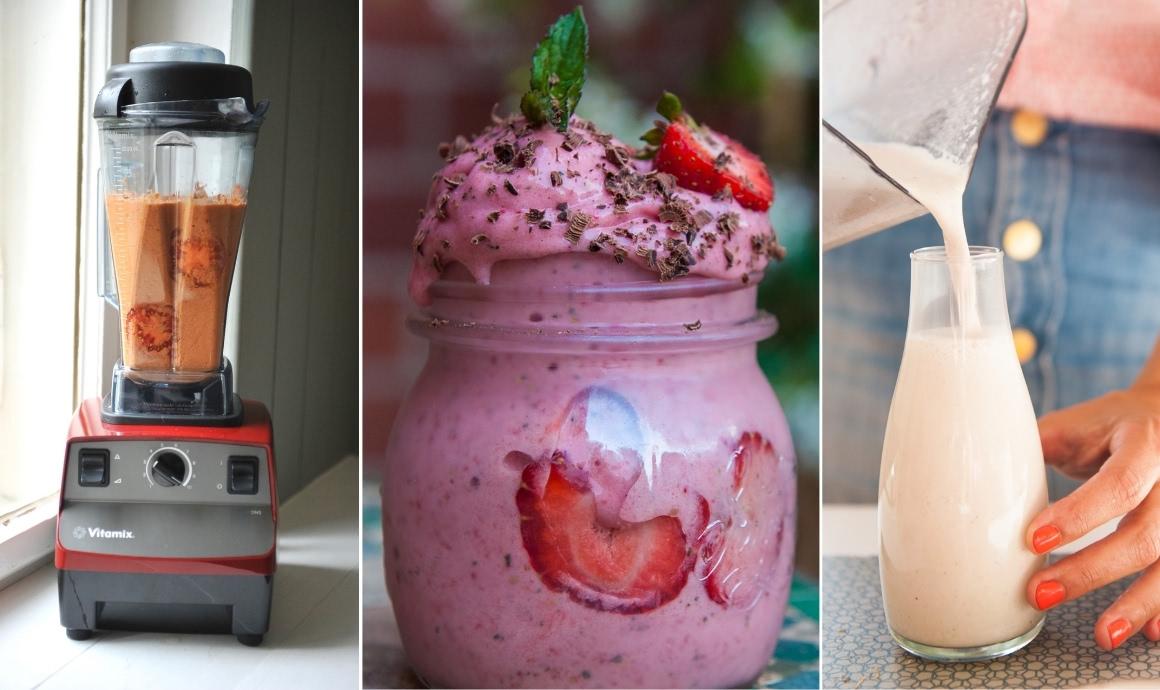
All smoothie makers usually have plastic parts that come into contact with the contents of the container, make sure that the temperature is moderate. Pay attention to the maximum temperature specified by the manufacturer! Depending on the model, the products in the container can heat up due to friction, especially if fatty ingredients are used. You should allow for a few degrees buffer (fat does not release heat quickly, but stores it). Even at high-speeds, a high-quality smoothie maker will keep the smoothie cool for a long time. This is ensured by a well-designed heat dissipation.
What smoothie maker models are there?
| Blender type | To-go blender | Kitchen blender | High performance blender |
|---|---|---|---|
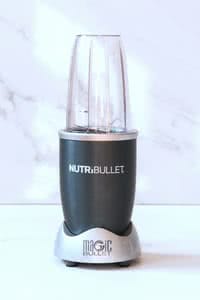 |
 |
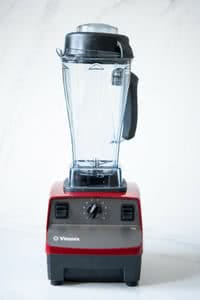 |
|
| Preparation quantity | up to 600 ml | up to 2 liters | up to 2 liters |
| Pro | Compact dimensions; Easy operation |
Price/performance can vary significantly depending on the model | best blending result possible depending on model |
| Contra | container shaped unsuitable for optimal blending result | Needs a fixed place in the kitchen due to its size | Needs a fixed place in the kitchen due to its size |
| Price range | 20 - 250 € | 30 - 250 € | 90 - 2.000 € |
One can rightly wonder about the huge price range. The models differ significantly - not only visually - but especially in the creaminess of the blending result. However, assessing what is "under the hood" in terms of technology and how the container can be rated is likely to quickly become too much for the uninformed non-expert. We will therefore go into the most important factors that ensure a fiber-free blending result:
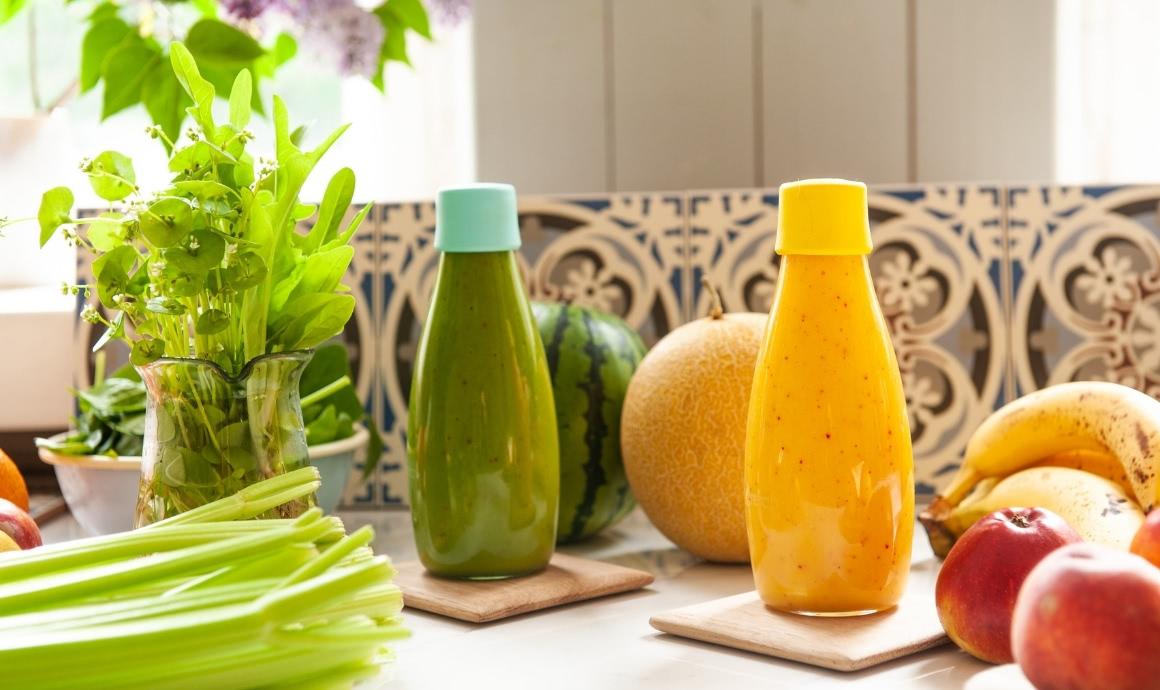
What to look for when buying a smoothie maker?
First, we would like to roughly sort out at this point: Although the to-go blenders look very practical in the photos, you should not expect a fine creaminess here. By blending in the drinking bottle, no air can evade during the blending process.
Due to the design, such blenders can not rotate their blades fast - otherwise too much friction heat is generated which results in the risk of the container bursting during the blending process. High blade speed is essential, so the only arguments that remain for to-go blenders are: Lack of space and the use for simple (powder) shakes.
If you value a fine degree of creaminess, it is therefore better to forget To-Go blenders. Go straight for a blender that has an air supply at the top. These are larger and also usually more expensive, but they deliver better results. These are the components that characterize a good smoothie maker:
Knives / Blades
With a smoothie maker, the most important thing of course is that the drink/smoothie really is "smooth" (nice and creamy). In our opinion, this is the most important Criterion for a smoothie maker. The creamy consistency is created when the ingredients are so finely pureed that you can no longer bite them, they turn into a homogeneous liquid. Of course, this also applies to small seeds, such as raspberry seeds. For this, the container shape and especially the knife are crucial. Intuitively, one might think that the knife should be particularly sharp. In our experience, however, the opposite is the case:
The duller the knife, the better!
How come? Sharp knives actually cut through ingredients. For particles so small that they would still get caught between the teeth, sharp knives are too shallow. This is because the small particles have an easy time avoiding the knife.
Blunt knives, which are wedge-shaped, crush the coarse particles in the first step, they are still sharp enough for this. In the second step, everything that got around the knive in step one, collides behind the knive, this is due to the vacuum created at high speeds. The ingredients are not only cut, but collide behind the knife and are crushed by the impact. If the knife is sharp and flat, collisions do not occur and the small pieces remain.
If the power plug is disconnected, you can carefully(!) feel how sharp the knife is. If you have the feeling that you could cut yourself, you should not expect miracles when blending. A blunt wedge-shaped knife achieves significantly creamier results. However, the blunt knife can only show its strengths if the motor is powerful enough.
Another quality feature is the radius or diameter of the blades, not to be confused with the length of the blades.
The longer the blade circumference, the finer the smoothies
Many smoothie maker manufacturers focus on long, sharp blades that point almost vertically upwards. This suggests a lot of power and performance, however, the blending result usually tastes rather grainy. Long blades that are as flat as possible are better.
Even if the two smoothie makers from these illustrations promise the same RPMs, the smoothie maker from the right illustration will produce much finer smoothies with the same motorization. The particles collide with the blades at a much higher speed. Last but not least, there is the question of whether the number of blades has an influence on the blending result. Our experience is clearly inconclusive:
The number of blades does not matter when it comes to the creaminess of the smoothie. We've had so many smoothies from containers with 2 blades, 4 blades or even 7 blades. With each number of blades, there have been positive and negative examples of blenders, we don't think the number of blades is a reliable buying criterion.
Blade tip speed
To understand the background of Blade tip speed, perhaps this fairground story will help:
If you sit at the outer end of a carousel, you are moving faster and have more draft. If you like it cozier, it's best to sit on the inside, close to the center. Although both passengers turn at the identical number of revolutions per minute, the guest at the outer edge will feel much more draft than the guest sitting closer to the center. The guest at the outer end moves at a much higher speed than the guest close to the center.
At this point, it becomes clear how misleading the term "revolutions per minute" is.
Much more interesting is the question of how strong the draft becomes. The faster you move, the stronger the draft. For our blender blades, this means: what speed does the blade reach at the fastest point (i.e at the outermost tip)? Or as we would say: What is the blade tip speed?
While a carousel is rarely run at top speed, as smoothie lovers we are interested in where the performance limits are and how finely a smoothie can be blended. Here, it makes a difference whether the carousel is fully loaded with guests or making an empty run. Fully loaded, of course, it will barely reach its top speed. For the smoothie maker, this means that it can be fast without ingredients, but how fast is it with a full container?
We answered this question in the high-tech lab: high blade tip speed is a mandatory requirement for finely pureed smoothies, but not the only one.
Motor
The motor is the driving force in the smoothie maker. In order for the blunt blade to work to its full potential, the motor must ensure that it spins as quickly as possible, despite the mass against which it must work.
This requires sufficient torque, as well as maximum speed - both propertys need power/energy, this energy is measured in watts.
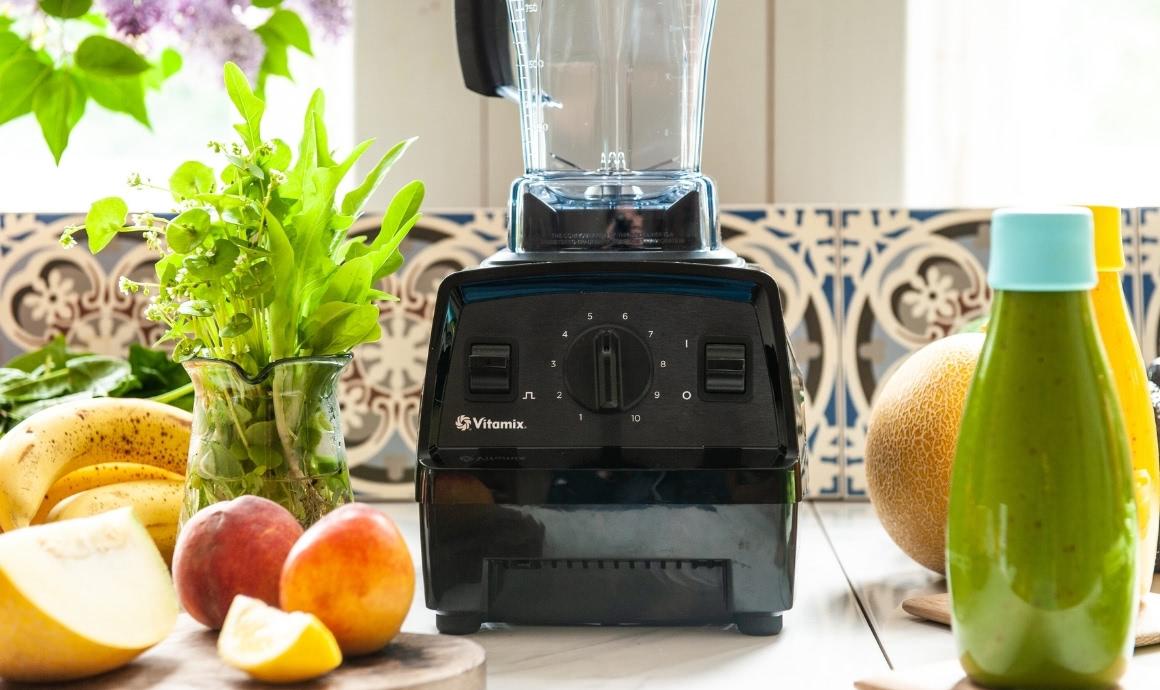
At this point, it also becomes clear what distinguishes a smoothie maker from a classic food processor or the Thermomix. The classic food processor is optimized for tough dough masses that require a very high torque, but forgo high speed. Smoothie makers tend to forgo torque in favor of speed. Simply put:
Tough dough masses belong in the food processor and smoothies in the smoothie maker.
Of course, if you have two blenders in the same speed class, a higher torque will still help. The higher torque one will have to "brake" less and can maintain its speed even under load. The low torque one, on the other hand, will slow down and heat up, the power can no longer be converted into speed and only heat development remains as a "valve".
Nowadays it only is a question of the budget, for manufacturers to procure high-quality motors..... But it takes highly specialized engineering knowledge in order to development of a good container.
Vessel
Last but not least, we look at the core of a good smoothie maker, the container. While various manufacturers build very good motors, most fail to build a good container. The container is not only about the "outer shell", but also about the blade block. The container should ensure that the ingredients keep colliding with the blade. In no case should the ingredients flow in the same direction as the blade base. Glass containers show their weaknesses here, which is why they have not yet been used in the premium segment. Most of the time, the containers are really round and the ingredients just spin in circles. The maximum limit of crushing is reached early on, as there is no longer any collision. Eastman Tritan Copolyester - BPA-free plastic is mostly used as an alternative to glass, making angular shapes of the container easier to produce without adding too much to the weight.
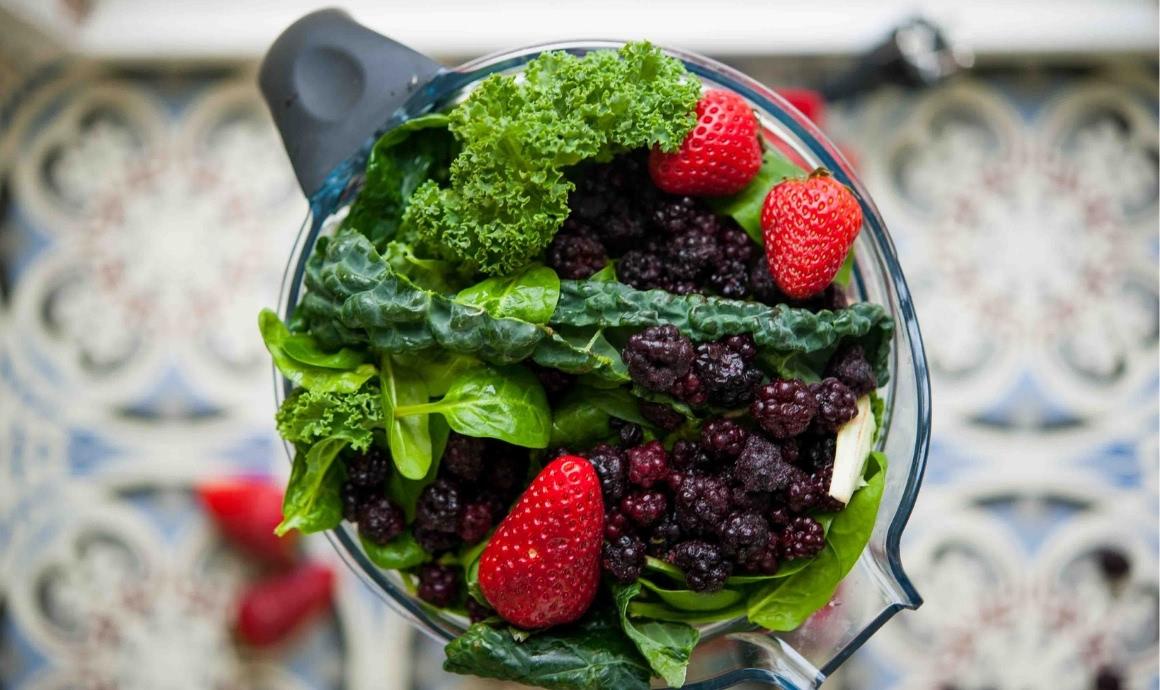
As a simple rule of thumb:
A square bottom surfaces inside the container is better than a circular one.
Transitions can be smooth, but if 4 corners should be recognizable!
In this comparison video, RP Online shows how big the difference between smoothie makers can be:
Automatic programs
Which automatic programs are available?
Now to the most unimportant: automatic programs. Manufacturers like to advertise with many "automatic programs". The classic is the cleaning program, which is praised as a "smart clean function", "self-cleaning" program or similar. One should possibly get the impression that the blender does the dishes. Unfortunately, this is never the case. As a rule, it is simply an automatic switch-off, which switches off automatically after 10 to 60 seconds of blending. Not a complicated thing....
To avoid misleading, we call them time programs on our website. This makes it clear that the time is kept automatically and nothing else. You still have to fill the container with water and some detergent yourself, and you also have to rinse the container after the end of the cleaning program.
In addition to the famous cleaning program, there are numerous others depending on the model: For example, a "Frozen Desert" program, or a "Smoothie" program. What these programs all have in common? they are all based on a simple time control, they run at maximum speed and stop after a certain time interval.
Do I need automatic programs?
Short answer: No.
Long answer: Automatic programs can certainly be practical in individual cases, provided they deliver what they promise. However, when trying out numerous blender models, we noticed that only in exceptional cases an automatic program did a better job than the in manual use. However, if this requirement is met (as in the case of all Vitamix models), you can quickly get used to it: Just turn it on and let it go. When preparing smoothies, for example, you can already rinse the knife and cutting board or dispose the peels and seeds during the blending process without having to make sure to turn off the blender before the smoothie gets too warm. A soup program can be interesting for raw foodists who want to heat their soup directly in the blender, this is possible due to friction heat and allows you to heat the soup to just under 40 degrees Celsius. These programs run for several minutes at maximum speed and volume. This is a situation in which it is nice to leave the room and be certain that nothing "boils over". From our point of view, this should be more of a nice feauture, but for the purchase, all other points mentioned before are clearly more important.
What is the best smoothie maker?
After regularly testing numerous smoothie makers over the last few years, the best smoothie maker clearly is the Vitamix Pro 750 (as of 10/2024).
The taste and creaminess are convincing all along the line. Independent development engineers have also confirmed that they don't see any more room for improvement on the container of the Vitamix Pro 750. Better results could only be achieved by sacrificing heat development or weight.
The motor has 1200 watts, which were achieved with a fully filled container in our test run (2 liters).
The comparatively long blades ensure that much finer smoothies are produced, even at lower speeds than in the legendary Vitamix TNC 5200.
This is where the high blade tip speed comes into play: The carousel of the Vitamix Pro 750 is simply larger than in most other blenders.
The Vitamix Pro 750 holds the speed record, thanks to successful heat evasion. Comparatively low temperature increase, less than 9 degrees Celsius in 60 seconds blending time on full speed.
The noise level of 83 dB (1.5 liters of water at maximum speed) is also inconspicuous in the market comparison. This makes it the quietest Vitamix on maximum speed.
Verdict: For us, the Vitamix Pro 750 is therefore the best smoothie maker in the overall package.
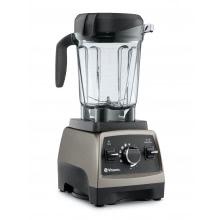
Regular Price: €1,099.00
Special Price €999.00
Smoothie Maker Recipes
Here you will find a selection of great recipes that you can prepare in your smoothie maker:
- Green Smoothies Recipes for Beginners
- Vegetable Smoothies Recipes
- White Smoothies Recipes
- Ginger Shot Recipes
- Applesauce
- Hummus
We appreciate your Feedback!



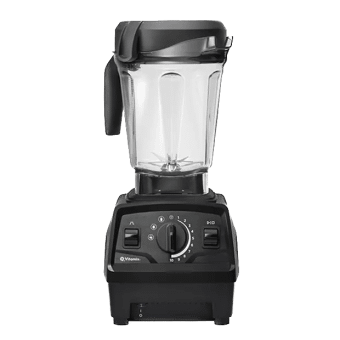





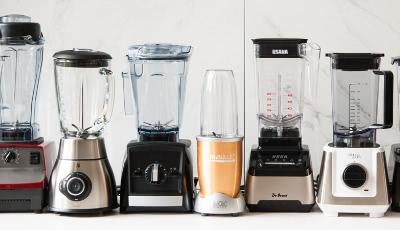
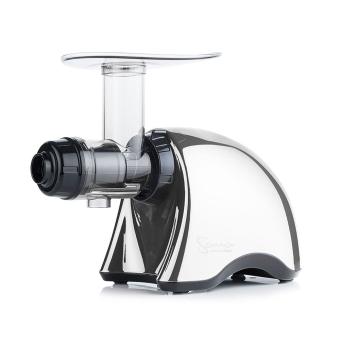






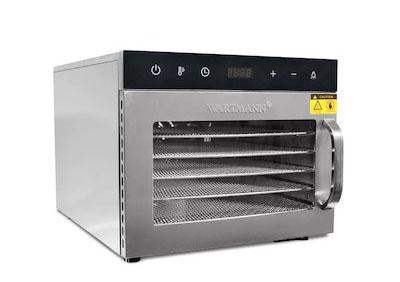
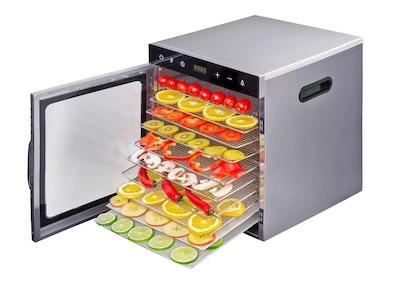
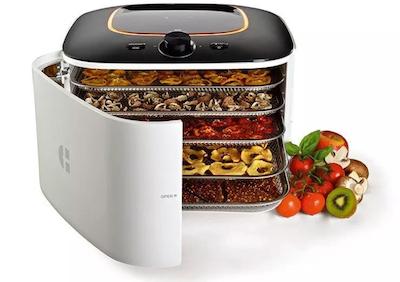
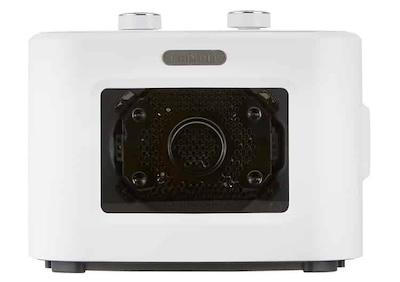
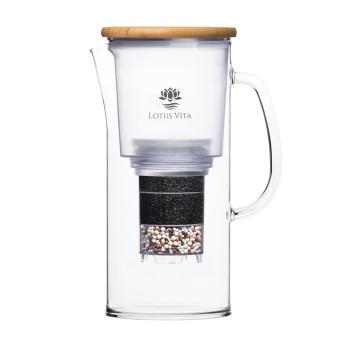
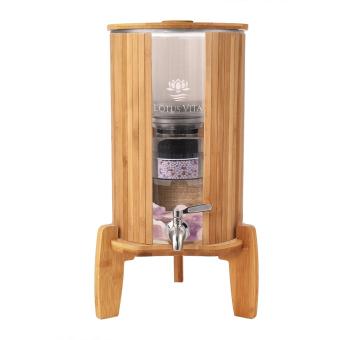
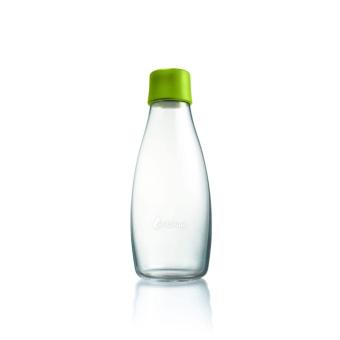

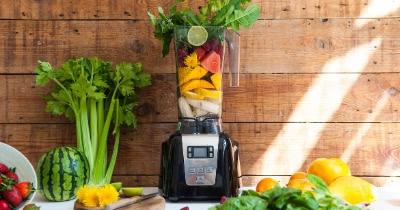
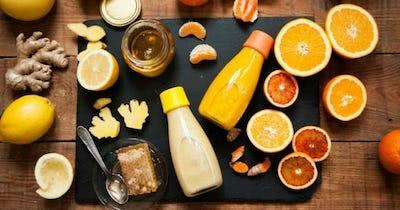

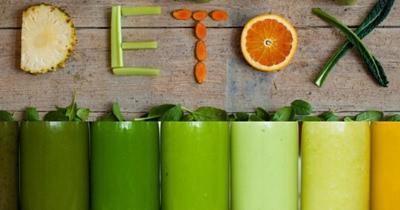
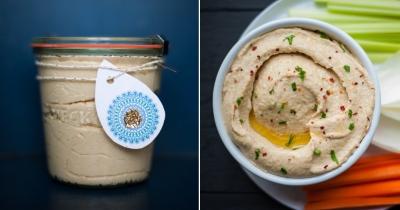
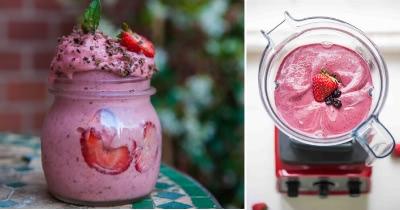
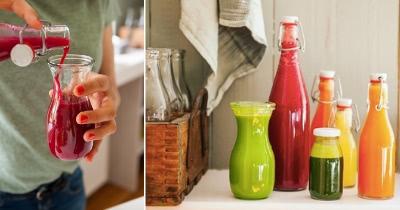
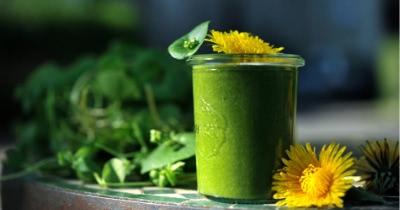

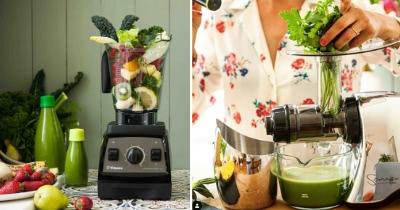





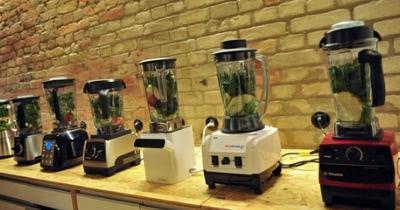
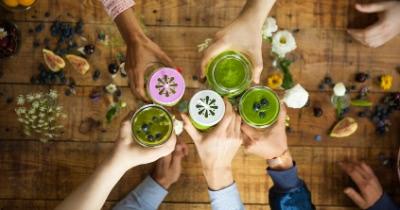

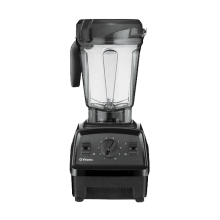

Add comment
20 | Comment(s)
I am looking for a high-speed blender. What is very important to me is as little plastic as possible and a glass container. which models would still be suitable then?
Best regards and thank you in advance for your help.
Anni
thank you for your inquiry. Take a look at the Bianco di Puro Primo I with the stainless steel container Inox. If a 0.8-liter volume is sufficient for you, this would be a top recommendation. Glass containers designed for a high-speed blender are extremely heavy because the glass is very thick. Therefore, the trend is moving towards stainless steel containers, which are significantly lighter.
Best regards,
Carla
thank you for your comment.
Our high speed blenders are specialized in blending and are therefore perfect for preparing green smoothies, fruit and vegetable smoothies, shakes, soups - anything with a liquid consistency. Additionally, you can use them to make hummus, pesto, nice cream, or liquid batters. What they are not suitable for are particularly sticky, thick dough consistencies. Your device seems to be a combination of a blender and food processor - so it is suitable for all kinds of dough. However, I would doubt if it has the blending capability of a high speed blender when it comes to blending green smoothies with very fibrous ingredients such as kale, wild herbs, or grasses. The multifunctional devices we have tested so far have not been able to match the finest, particle-free creaminess when making green smoothies.
Best regards,
Carla
Even with the cheaper version ?
thank you for your inquiry.
Most inexpensive blenders are capable of crushing ice cubes. I'm sure you can make shakes with it as well. A high speed blender is necessary if you want to blend really fibrous ingredients such as leafy greens or even some fruits - with peels and seeds - until creamy and fine.
Best regards,
Carla
thank you so much. Very kind of you and very informative.
Any alternative to the E310 in Bianco models? Is there one? Because visually, the Bianco models look very nice. So, one that can also process everything very finely?
Thank you very much :)
Of course, you can also opt for a Bianco blender - here I would recommend our Bianco bestseller, the Bianco di Puro Primo.
Warm regards,
Carla
which high-speed blender could you recommend for me? It's crucial to me that I don't feel anything in the smoothies, so they should be completely creamy and especially smooth, without any pieces in them! I would be willing to spend up to 450/500 euros at most. It would be great if you could tell me which one would be best suited for me.
Thank you so much.
Kind regards,
Helga
thank you for your inquiry.
For the best smoothie creaminess, especially with green smoothies - really fine and fluffy - you can create it with the Vitamix Pro 750.
A touch less fluffiness, but still creamy, fine green smoothies and fruit smoothies that are completely particle-free, can be made with the Vitamix E310 - which falls within the price range you mentioned.
Best regards,
Carla
thank you for your inquiry! When I read your comment, the only blender that comes to mind is the Vitamix Pro 750. With that, you can blend the creamiest green smoothies, and it fits under the kitchen cabinet. An amazing blender!
The fact that sometimes a smoothie separates after being stored for a while has nothing to do with the blender, but with the ingredients used. So just give it a good shake before drinking and everything will be well mixed and super creamy again!
Best regards,
Carla
Regards, Bea
of course: That's the Bianco di Puro Primo. It's now called Bianco di Puro Primo Plus, as it has been enhanced with 3 timing programs. A great high-speed blender well below 300 euros.
Best regards,
Carla
Best regards!
Karen-Marie S.
Thank you so much for the lovely feedback! Green smoothies definitely support a nutrient-rich diet and are very easy to digest—especially when they are well blended.
All the best to you,
Carla
I have now also gone through many comments, through the recommendations, and there is so much information that I don't even know anymore what might be the right choice. I also noticed your energy-saving plug, I really like it too.
Perhaps you can help me narrow down my selection a bit. Here's what I would like to be able to do with a high-speed blender: smoothies, plant-based milk, cashew cream or cheese, ice cream, crushed ice, pesto, spreads... and all of this in a fine quality, without any annoying seeds and chunks... for small portions (single household) and the prices of 800€ are already making me gasp a little ;-)
Perhaps I should also mention that I generally don't cook much and have only been moving towards an alkaline diet for a few months. I would be very grateful for any feedback :-) Best regards, Micaela
Thank you very much for your comment and the positive feedback on our site!
For the preparations you mentioned and the need to make small amounts as well, blenders with a narrow container are suitable.
With Bianco, these are the following devices:
Bianco Attivo;
Bianco Puro Originale;
With Vitamix, these are the following models:
Vitamix E310;
Vitamix TNC 5200;
Vitamix Pro 500;
The Bianco di Puro Attivo is a compact blender, with a maximum preparation capacity of about 1 liter. If that's too little, a fantastic alternative for you could be the Vitamix E310 - it can make all the preparations you mentioned excellently and has a capacity of up to 1.4 liters. It's a fantastic blender that I can highly recommend to you. The containers of the other models - both Vitamix and Bianco di Puro - hold up to 2 liters, and some of them have multiple time programs, such as the Vitamix Pro 500 or the Bianco di Puro Originale.
If you have any more questions, feel free to reach out!
Carla
Thank you for your question.
I can recommend two compact to-go blenders for you: the Bianco di Puro Attivo and the Vitamix S30.
Differences include:
The Vitamix S30 comes with a 1.2-liter container and an additional to-go container with a volume of 0.6 liters. It also has a 7-year warranty on all (!) parts.
The Bianco di Puro Attivo is equipped with a 1-liter container and a to-go container of 0.6 liters. Additionally, you currently receive the following free extras: a great travel bag with compartments for the blender parts and two more to-go containers with a capacity of 250 ml and 400 ml - ideal for grinding spices, making dressings, and preparing small quantities.
Here, you get a 5-year warranty on the blender base and 2 years on the other parts.
I personally take the Vitamix S30 with me on longer trips - you can find my review here.
If you have any more questions, feel free to reach out!
Best regards,
Carla